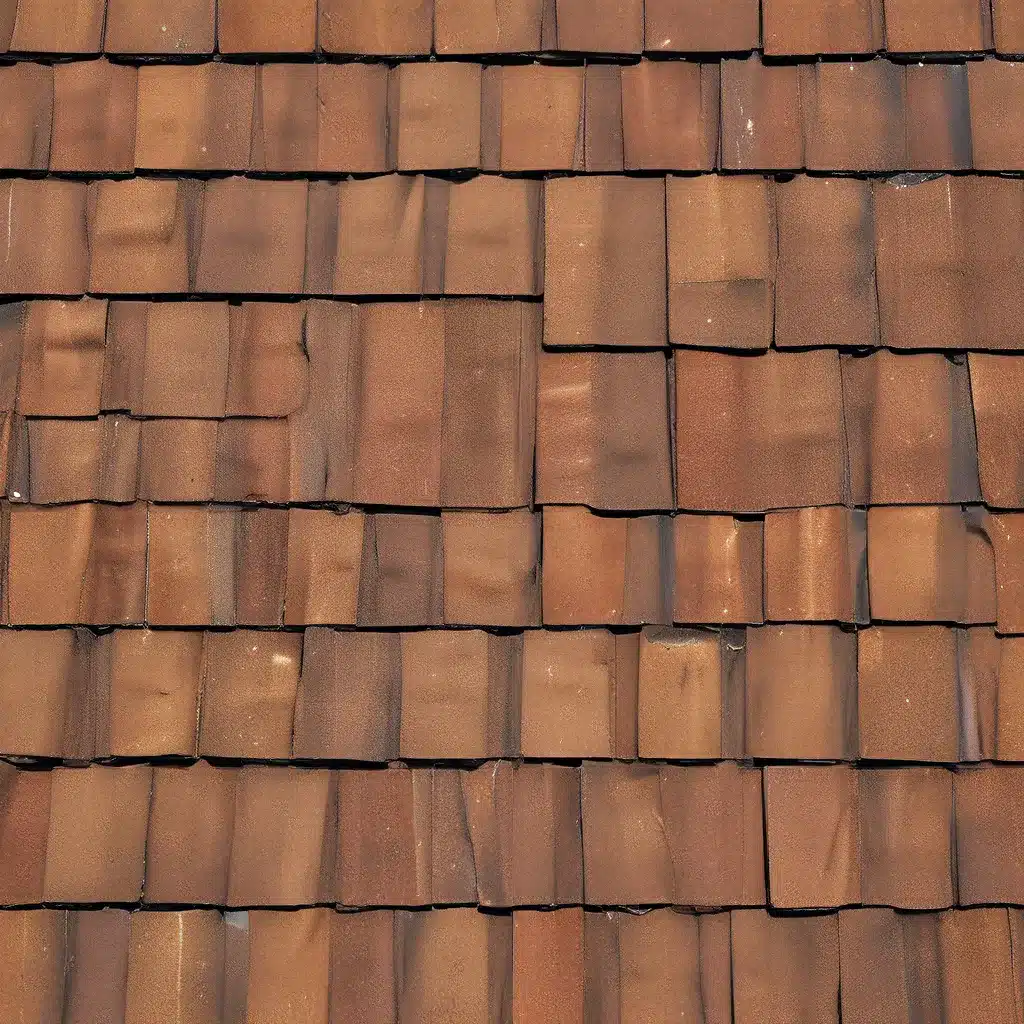
Unveiling the Unsightly Stains That Haunt Our Roofs
Look up at your roof, and what do you see? Chances are, you’re greeted by a puzzling display of discoloration: dark streaks, green patches, or faded spots that seem to mar the once pristine appearance of your home’s crowning glory. As a homeowner, you’ve likely found yourself perplexed, wondering, “What on earth is causing these unsightly blemishes?”
Well, fear not, my friend – the mystery of roof discoloration is about to be unraveled. In this comprehensive article, we’re going to delve deep into the underlying causes of these stubborn marks, providing you with valuable insights and practical solutions to keep your roof looking its absolute best.
Unraveling the Causes of Roof Discoloration
Algae: One of the primary culprits behind those unsightly dark streaks on your roof is the presence of algae. These pesky microorganisms thrive in warm, moist environments and can quickly spread across your shingles, leaving a trail of discoloration in their wake. The growth of algae is often fueled by the run-off from nearby trees, as well as the natural aging of the roofing materials.
Lichens: Another common source of roof discoloration is the presence of lichens: a symbiotic partnership between fungi and algae or cyanobacteria. These hardy organisms can take up residence on your roof, manifesting as vibrant green or gray patches that can be quite difficult to remove. Lichens are particularly stubborn, as they can penetrate deep into the roofing materials, making them a challenge to eradicate.
Moss: If you’ve noticed a lush, verdant carpet of moss taking over your roof, you’re not alone. Moss thrives in shaded, damp areas, and it can quickly spread, giving your roof an unwelcome, natural makeover. While moss may appear charming at first glance, it can actually cause significant damage to your roofing materials, leading to leaks and other structural issues.
Pollution: In urban or industrial areas, your roof may also fall victim to airborne pollution. Particulate matter, soot, and other contaminants can settle on your shingles, creating unsightly discoloration that can be difficult to remove. This type of discoloration is often seen as a hazy, graying effect across the entire roof surface.
Weather and Weathering: Even in the absence of biological agents, your roof can still fall prey to discoloration due to the natural weathering process. The constant exposure to the elements, such as UV radiation, rain, and temperature fluctuations, can cause the roofing materials to fade, crack, or develop a weathered appearance over time.
Tree-Related Factors: If you have trees overhanging your roof, you might notice that the areas directly beneath the branches are more prone to discoloration. This is often due to the shading effect, which can create a moisture-rich environment that fosters the growth of algae, lichens, or moss. Additionally, the debris from the trees, such as leaves, twigs, and sap, can contribute to the overall discoloration of your roof.
Preventing and Remedying Roof Discoloration
Now that we’ve unveiled the mysterious causes behind those unsightly roof stains, it’s time to explore the preventive measures and remedies you can implement to keep your roof looking its best.
Preventive Measures
Regular Roof Cleaning: One of the most effective ways to prevent and mitigate roof discoloration is to schedule regular roof cleaning. This involves using specialized cleaning solutions or soft-washing techniques to remove any accumulated algae, lichens, or moss without damaging the roofing materials.
Proper Ventilation: Ensuring that your roof has adequate ventilation can also play a crucial role in deterring the growth of biological agents. Proper airflow can help regulate temperature and moisture levels, making it less inviting for algae, lichens, and moss to take hold.
Tree Trimming: If you have trees overhanging your roof, be sure to keep them trimmed and maintained. This will not only reduce the amount of debris falling onto your roof but also minimize the shading effect that can contribute to the growth of discoloring agents.
Roof Coating: Applying a specialized roof coating or sealant can create a barrier that helps protect your roof from the elements and makes it less hospitable for algae, lichens, and moss to thrive.
Remedies
Chemical Treatments: For stubborn cases of roof discoloration, you may need to resort to chemical treatments. These typically involve the use of bleach-based or enzymatic cleaners that can effectively remove the offending microorganisms and restore the original appearance of your roof.
Pressure Washing: In some instances, pressure washing may be necessary to dislodge deeply rooted lichens or moss. However, it’s crucial to exercise caution and use the appropriate pressure settings to avoid damaging the roofing materials.
Roof Replacement: If the discoloration has become so severe that it’s affecting the structural integrity of your roof, it may be time to consider a roof replacement. While this is a more significant investment, it can ensure the long-term durability and aesthetic appeal of your home.
Embracing the Beauty of a Well-Maintained Roof
Remember, your roof is not just a functional component of your home – it’s also a critical part of its overall curb appeal. By understanding the causes of roof discoloration and taking proactive steps to prevent and remedy these issues, you can maintain a beautiful and durable roof that will safeguard your cherished home for years to come.
So, the next time you look up at your roof, don’t see a puzzle of perplexing stains – see a canvas of possibilities, where the vibrant hues of a well-maintained roof can truly shine. Southern Roofing Co. is here to help you uncover the hidden potential of your roof and keep it looking its absolute best.